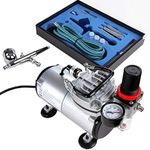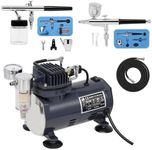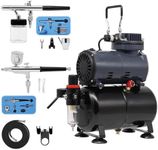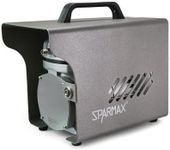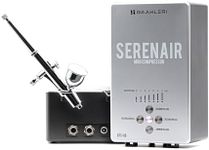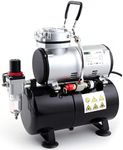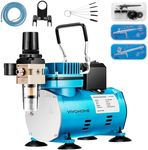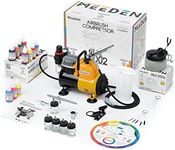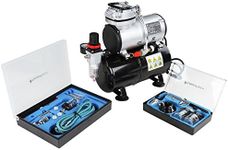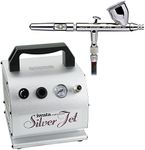Buying Guide for the Best Airbrush Compressors
Choosing the right airbrush compressor is crucial for achieving the best results in your airbrushing projects. The compressor is the heart of your airbrush setup, providing the necessary air pressure to atomize the paint and create smooth, even coats. When selecting an airbrush compressor, consider the type of work you will be doing, the environment in which you will be working, and your personal preferences for noise and portability. Understanding the key specifications will help you make an informed decision that suits your needs.PSI (Pounds per Square Inch)PSI measures the air pressure that the compressor can deliver. This is important because different airbrushing tasks require different levels of pressure. For fine detail work, lower PSI (around 10-20 PSI) is often sufficient, while larger areas or thicker paints may require higher PSI (up to 40 PSI or more). Consider the type of projects you will be working on to determine the appropriate PSI range for your compressor.
CFM (Cubic Feet per Minute)CFM indicates the volume of air the compressor can deliver per minute. A higher CFM means the compressor can support larger airbrushes or multiple airbrushes at once. For most hobbyist applications, a CFM of 0.5 to 1.0 is adequate. If you plan to use larger airbrushes or work on bigger projects, look for a compressor with a higher CFM rating.
Tank SizeThe tank size of a compressor affects how long it can run before needing to refill with air. A larger tank can provide a more consistent air flow and reduce the frequency of the motor running, which can be beneficial for longer sessions. For small projects or occasional use, a tankless or small tank compressor may suffice. For extended use or larger projects, consider a compressor with a larger tank.
Noise LevelNoise level is an important consideration, especially if you will be working in a shared or quiet environment. Compressors are rated in decibels (dB), and lower dB ratings indicate quieter operation. If noise is a concern, look for a compressor with a noise level under 60 dB. For those who prioritize a quiet workspace, consider investing in a silent or ultra-quiet compressor.
PortabilityPortability refers to how easy it is to move the compressor around. If you need to transport your compressor frequently or have limited space, a compact and lightweight model may be ideal. Consider the weight and size of the compressor, as well as any handles or wheels that make it easier to move. For stationary setups, portability may be less of a concern.
Oil vs. Oil-FreeCompressors can be oil-lubricated or oil-free. Oil-lubricated compressors tend to be quieter and more durable, but they require regular maintenance to change the oil. Oil-free compressors are generally maintenance-free and more convenient for beginners. If you prefer low maintenance and ease of use, an oil-free compressor may be the best choice. For those who prioritize longevity and quieter operation, consider an oil-lubricated model.
